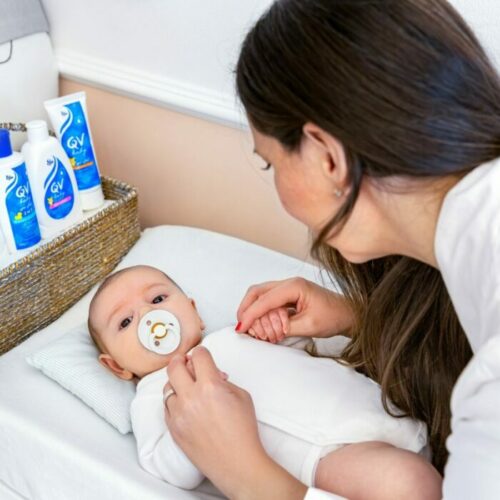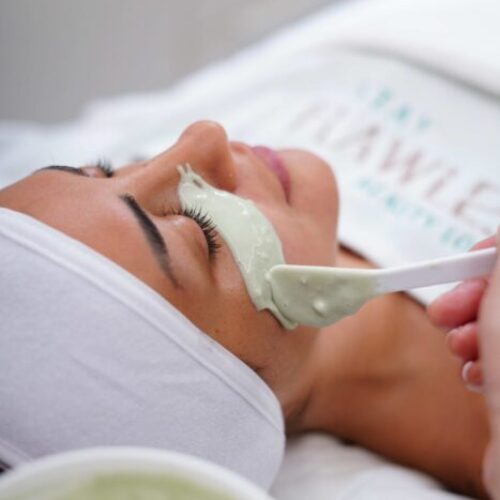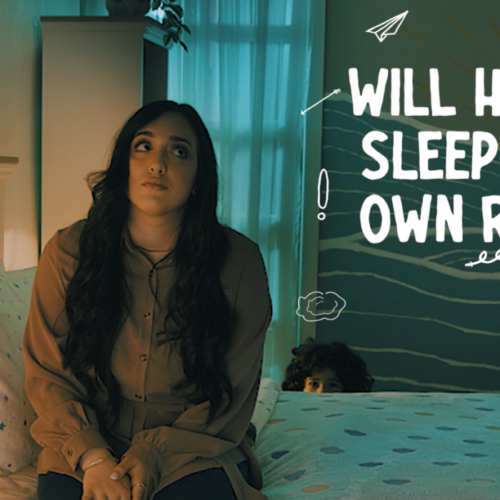How to choose the right paint for your baby’s nursery

Here are a few tips and tricks from Jotun Paints to keep in mind when picking a colour for your little one’s nursery.
Expecting a baby is one of the most exciting times in your life, and it’s natural to want to get everything as perfectly prepared as possible. A lot of time and effort usually goes into planning the look of your baby’s environment, especially the nursery. A crucial aspect of preparing the nursery is painting the walls, to provide a space that is positive and pleasant for your new arrival to grow in. With countless paints and hues available from several different suppliers, it can be a challenge to choose the right colour. Let’s look at what to consider.
The power of colour
Colour has a significant impact on the way we think and feel, and the same is true of babies. Different tones can contribute to distinct feelings such as excitement, anger, comfort, calm and more. Therefore, it is essential to consult the wisdom of colour psychology to select the best hue, one that complements the overall atmosphere of your home and also helps to put your baby at ease. For example, light shades of green promote calm and serenity due to their relationship with nature. Similarly, shades of light pink can evoke feelings of love and joy. It’s more common these days to avoid choosing gender specific colours as many new mums feel blue for boys and pink for girls is an old-fashioned way of styling your nursery.
Is the paint washable?
The nursery is often an area that gets dirty quickly. It’s a place where stains are more likely to occur on the walls. Whether you prefer paint that has a silky finish (glossy) or a non-reflective matt paint, pay attention to the washability of the paint. The more washable the paint is, the less hassle cleaning it will be. If the paint has superior washability, the colour won’t fade when you need to clean up dirt and stains, keeping the walls looking as good as if they were freshly painted.
Go low or zero VOC
VOC means volatile organic compounds. These are harmful chemicals that vaporise at room temperature and enter the atmosphere. Using paint with low or zero VOC is not only more environmentally friendly, but also critical for the baby’s safety as VOCs are known to contribute to many health conditions, including breathing difficulties, fatigue and more. By opting for low or zero VOC paints, nurseries are more likely to be a toxin-free environment, as well as having improved air quality. Low VOC paints have 50 grams per litre or less of volatile organic compounds, whilst zero VOC paints have only 5 grams per litre or less. Water-based paints normally have lower VOCs when compared to oil-based paints. However, it is still important to check the actual VOC content of your chosen hue. This measurement is usually displayed on a paint’s technical data sheet, but can also be checked with a paint expert.
Avoid smelly paint
Paint often smells. Although most paint odours are harmless, exposure to vapour from paint with high VOCs can harm adults and babies. Nevertheless, paints with low or zero VOCs are not necessarily odourless and may still negatively impact a baby’s comfort level. Some modern interior paints are both low in VOCs and contain properties that don’t emit any smell, making them a great choice. However, if odourless paints are not available, it is wise to keep the nursery well ventilated when painting to get the smell out as quickly as possible. This can be accomplished by keeping the windows open for an extended period after painting or by using fans to blow out the fumes. Even after the paint dries, it is recommended you use HEPA (high efficiency particulate air) filters to remove any lingering odour.
Minimise bacteria transfer
Naturally, the nursery is where little ones will spend a significant amount of their time. While exploring the room, they are likely to come into contact with the painted walls. This makes it imperative to choose a paint that is ‘safe’ to interact with. This means selecting paints that have antibacterial and antifungal properties, which minimise the transfer of bacteria on contact. Using water-resistant paints that leave walls easy to clean can help remove unwanted stains and smudges, while also preventing the accumulation of germs.
Testing is vital
It is always best to test paint before you take the plunge. This helps prevent costly mistakes, including safety, time and money. Paint can be tested on a small patch of wall so you can observe it over a period of time, under different lighting conditions. Paint colours are known to look different depending on factors like lighting, finish, amount of paint used, the existing colour that will be painted over and more. It’s also a good idea to give odours extra time to dissipate, as they might take longer than you anticipated. Therefore, it’s best to start planning and testing the paint of a nursery early to ensure a smooth transition in welcoming and providing your little one with a safe space to stay.
Get creative!
Don’t be afraid to indulge your creativity while painting your child’s nursery. Make it playful by painting stencils of different shapes on the walls that little ones will love. If two babies are sharing the room, two colours can be chosen to separate the room and evoke a personalised feeling in each baby’s space. Painting the ceiling can also be a simple but different way to add colour to the space that entices little ones to wonder and explore their imagination.
All in all, there are many factors to keep in mind when selecting the perfect colour for your arrival’s new nursery. The main thing is to choose a hue that is non-toxic, washable and soothing to make a place where your baby can be safe, calm and happy.
Image Credit: ShutterStock











Comments